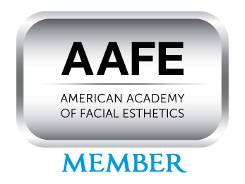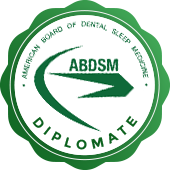Dental Bridges: A Lasting Solution for Missing Teeth

Dental bridges are a reliable and effective solution for replacing missing teeth, restoring both the function and appearance of the smile. They fill the gaps created by one or more absent teeth, preventing surrounding teeth from shifting and maintaining proper alignment. Dental bridges offer a long-term solution that supports oral health, enhances chewing and speaking, and boosts confidence in patients with missing teeth. Understanding the benefits, types, and care for dental bridges can help patients make informed decisions about their dental restoration options.
What are dental bridges?
A dental bridge is a prosthetic device that literally “bridges” the gap left by missing teeth. It consists of one or more artificial teeth, known as pontics, anchored by crowns placed on adjacent healthy teeth or dental implants. The bridge restores the natural shape of the teeth, allowing patients to maintain normal function and appearance.
Dental bridges aim to replicate the natural contour and color of teeth, blending seamlessly with the surrounding dentition. This combination of functionality and aesthetics makes dental bridges a popular choice for those seeking a permanent solution for missing teeth.
Types of dental bridges
There are several types of dental bridges, each designed to meet different needs:
- Traditional bridges: These are the most common type and involve placing crowns on the teeth adjacent to the gap, which support one or more pontics. Traditional bridges are strong and durable, making them suitable for most areas of the mouth.
- Cantilever bridges: These are similar to traditional bridges but are supported by a crown on only one adjacent tooth. Cantilever bridges are typically used when only one supporting tooth is available.
- Maryland bridges (also known as resin-bonded bridges): Utilize a metal or porcelain framework bonded to the back of adjacent teeth. They are less invasive but generally recommended for front teeth, where the bite pressure is lower.
- Implant-supported bridges: These bridges are anchored by dental implants, providing superior stability and preserving the jawbone structure. Implant-supported bridges are ideal for patients seeking a long-lasting solution with minimal impact on adjacent teeth.
Choosing the right type of dental bridge depends on the location of the missing teeth, the health of surrounding teeth, and the patient’s long-term goals for stability and aesthetics.
Benefits of dental bridges
Dental bridges offer several advantages for patients with missing teeth:
- Restored function: Bridges restore the ability to chew and speak properly, preventing dietary limitations and improving speech clarity.
- Maintained facial structure: Replacing missing teeth supports the jaw and prevents the sunken appearance that can occur over time.
- Prevented tooth shifting: Filling the gap prevents surrounding teeth from drifting out of position, which can cause bite problems and additional dental issues.
- Enhanced aesthetics: Dental bridges provide a natural-looking solution, improving confidence and creating a seamless smile.
These advantages make dental bridges a practical and reliable solution for maintaining oral health and restoring both function and confidence.
Who is a candidate for dental bridges?
Dental bridges are suitable for patients who have healthy teeth adjacent to the missing tooth or teeth. Candidates should have good overall oral health, including healthy gums and sufficient bone density to support the bridge structure. Dentists evaluate each patient individually, considering the location of the missing teeth, the condition of surrounding teeth, and the patient’s bite. Proper assessment ensures that the chosen bridge provides long-term stability and functionality.
Caring for dental bridges
Proper care is essential to extend the lifespan of a dental bridge. Patients should maintain regular oral hygiene routines, including brushing at least twice daily and flossing around the bridge to remove plaque and prevent decay. Using specialized floss or interdental brushes can help clean hard-to-reach areas beneath the pontic. Regular dental checkups allow the dentist to monitor the bridge and surrounding teeth for any signs of wear or issues.
Patients should also avoid biting hard objects with their bridge, such as ice or pens, which can damage the restoration. With diligent care, dental bridges can last for many years, providing a durable and effective solution for missing teeth.
Get a consult today
Dental bridges are a proven and long-lasting solution for replacing missing teeth, offering both functional and cosmetic benefits. They restore the ability to chew and speak effectively, maintain facial structure, prevent tooth shifting, and enhance the appearance of the smile. By understanding the types of dental bridges, the benefits they provide, and proper care practices, patients can make informed decisions about this restorative option. Working with a general dentist ensures that each bridge is tailored to the patient’s needs, providing a durable and natural-looking solution that supports lifelong oral health. For more information or to schedule an appointment, call our office at (425) 454-2005.
To schedule a consultation, please request an appointment on our website at https://artisandentalbellevue.com or call Artisan Dental Bellevue at (425) 454-2005 to arrange an appointment at our Bellevue office.
Check out what others are saying about our dental services on Yelp: Dental Bridges in Bellevue, WA.
Related Posts
When the smile is missing a tooth or three, a general dentist may recommend dental bridges to restore its appearance and functionality. Even a single missing tooth can cause difficulties with eating and speaking. It also leaves room for the remaining teeth to shift, leading to a misaligned bite. While traditional and implant-supported dental bridges…
Both dental bridges and implants are popular, effective tooth replacement solutions. However, there are cases in which a general dentist may recommend a dental bridge over implants. This may be due to the number of teeth missing, their location, and the strength of the underlying jawbone, among other factors. Understanding how each of these treatments…
A dental bridge is a popular tooth replacement option for those missing one or several teeth. Missing teeth can cause problems that go beyond the aesthetic. Therefore, patients should replace teeth promptly to preserve the health and appearance of their smile. Fortunately, a dental bridge is an effective and natural-looking way to do that.A dental…
Dental bridges are an option in restorative dentistry that replace missing teeth and restore your smile. This procedure improves the look of your smile and restores function so you can chew and speak comfortably. If you are considering this treatment, knowing the steps involved can help you prepare and adjust your expectations accordingly.Dental bridges are…









